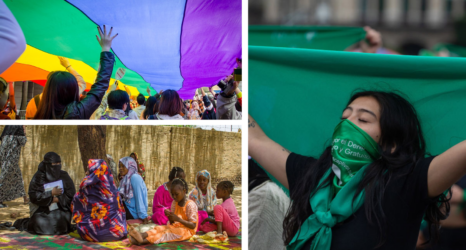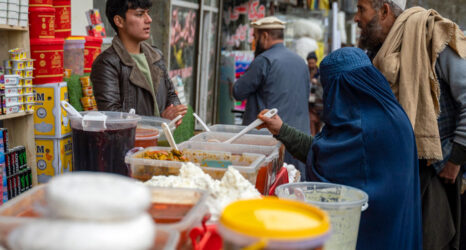Two days after an earthquake struck Nepal in April 2015, 180 students, businesswomen and community members headed to the Red Cross headquarters in Washington D.C. They weren’t there to give traditional disaster relief: funds, blankets, blood. Instead, they opened their computers and ordered pizza.
The volunteers spent the evening mapping Nepal. They used satellite software to trace buildings and roads in rural areas most affected by the earthquake. Days later, Nepali volunteers filled in the outlines with regional details. Accurate maps would be integral in disaster relief.
We take maps for granted in the developed world, particularly in the age of smart phones. But millions of people live in unmapped regions. When catastrophe strikes—like earthquakes in Nepal and Haiti and the typhoon in the Philippines—these communities can experience a delay in receiving aid. Unmapped populations are also vulnerable in health outbreaks. For example, in the West Africa ebola epidemic identification, isolation and treatment were imperative.
It’s not just disease and disasters. For women worldwide, being seen on a map can significantly improve the quality of day-to-day life. From healthcare to transportation to safety, being seen means more resources and more support. “When your community does not exist on a map it is less visible to decision makers,” says Emily Eros, a Red Cross official specialized in Geographic Information Systems. “Just by mapping who is there makes them more likely to be recognized.”
Eros is a member of Missing Maps. The initiative, founded in 2014, has an emphasis on women’s leadership and is facilitated by the American and British Red Cross in collaboration with Doctors Without Borders, Clinton Health Access Initiative and Humanitarian Open Street Map. “It is essential that women are part of the mapping process,” says Eros. “Women know where to go for health services. They know about hospitals, clinics, schools, child care centers and water points. Even a security matter—like the location of a street light—is something that a woman would notice.”
The steps of the program are three-fold. First, volunteers world-wide are assigned coordinates through Humanitarian Open Street Map and asked to trace satellite imagery of roads, water sources, buildings and more. From there, Missing Maps works with local volunteers, offering technical training and stipends with gender balance in mind. The maps are then reviewed by technical specialists and made free to the public. This helps NGOs serving the communities, but can also help governments and local organizations involved in city planning.
“People are always asking for ways to make a difference,” says Eros. “This contribution from volunteers is directly useful for us. It helps in a concrete way.” Missing Maps began with the hope of documenting 20 million vulnerable people by 2017. Today, volunteers are well on their way to surpassing that goal especially if their team continues to grow.
Joining the mappers is easy. You simply click here to sign up to host a map-a-thon or to map on your own. Participants range in age and computer skills with mapping parties everywhere from boardrooms to dormitories to retirement homes. This dynamic volunteer force is offering a new approach to humanitarian support. Instead of solely reacting to the world’s problems, they are taking preventative steps.
Why make a map the day after a disaster when you can make one today?
That’s not to say that there are no longer real-time requests. Just this month, on August 4, a Doctors Without Borders team leader posted to Missing Maps social media that he needed help with a yellow fever outbreak. “We are almost blind in many areas here in Kinshasa [Democratic Republic of Congo],” he wrote. “As fast as the mappers are creating the data, we are using it. It is vital information for us and we are very appreciative of their efforts.” In the days that followed, volunteers world-wide mapped as quickly as possible.
On August 19, Doctors Without Borders announced that 10.5 million people were being vaccinated the region. Missing Maps data was used in fumigation and vaccination planning. The vaccines needed to be kept at a specific temperature and transporting them safely was essential. The same team leader who sent the request for help posted this week saying: “We are at full stretch with the yellow fever intervention, so haven’t got time to report all the ways the Missing Maps mappers’ data has contributed to our operations! Please just pass on my thanks and the thanks of the [Doctors Without Borders] team!” Fifty mappers from around the world gave his note on Facebook the thumbs up, as the next mapping opportunity went live.





